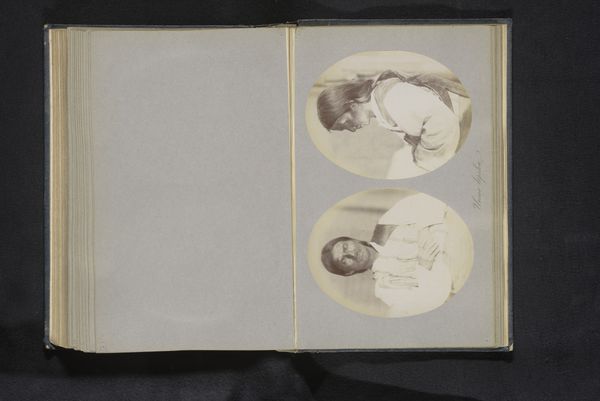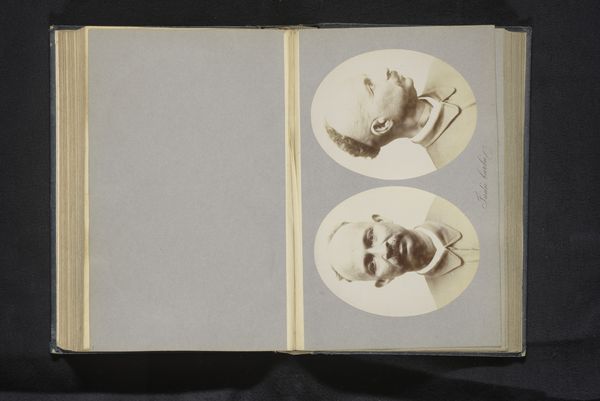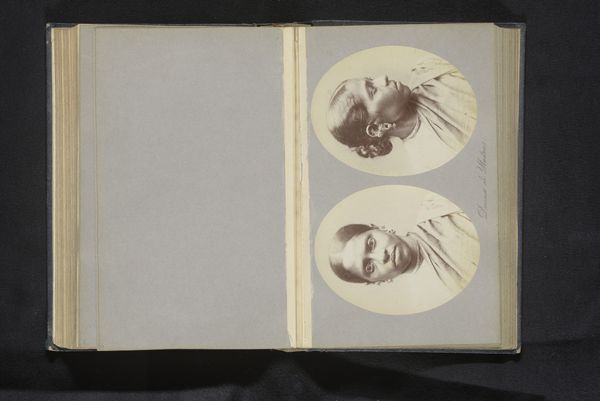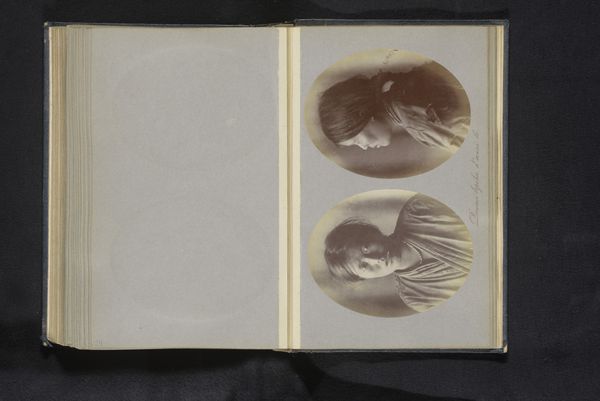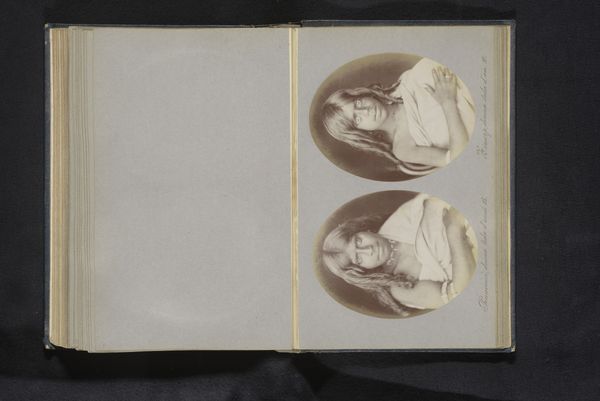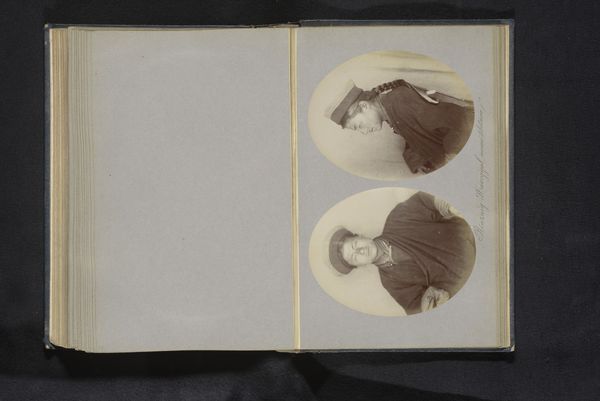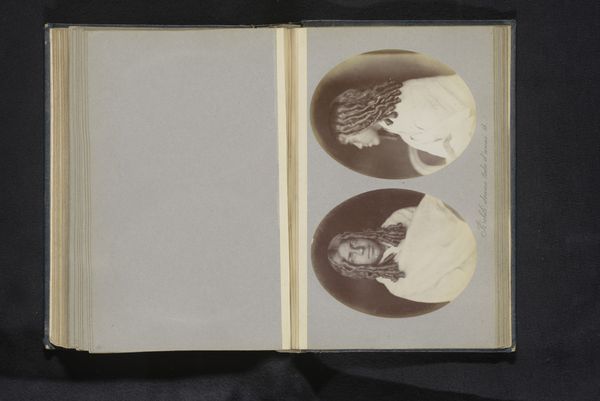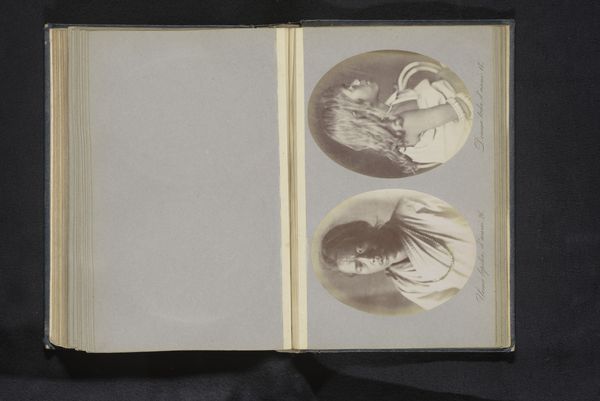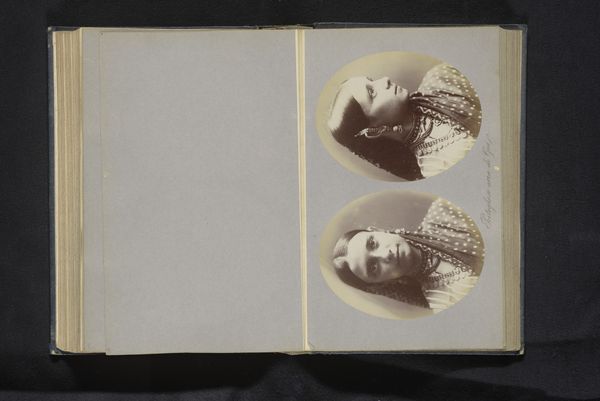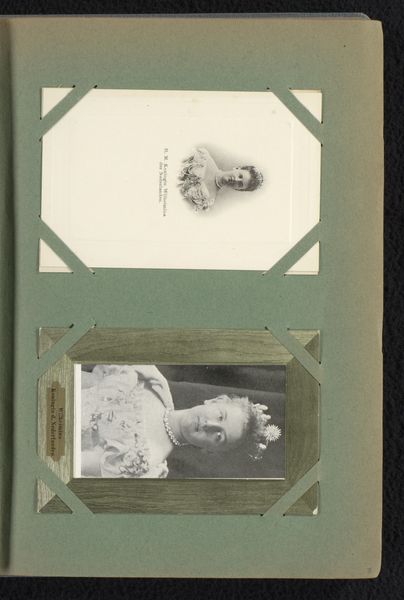
Twee portretten van een onbekende man van de Lepcha en een onbekende man van de Paharia-stam before 1886
0:00
0:00
print, photography
#
portrait
# print
#
photography
#
orientalism
Dimensions: height 151 mm, width 241 mm
Copyright: Rijks Museum: Open Domain
Curator: This fascinating double portrait, dated to before 1886, presents "Twee portretten van een onbekende man van de Lepcha en een onbekende man van de Paharia-stam." The artist behind these photographic prints remains anonymous. Editor: It's immediately striking, isn't it? The somberness...despite the scientific format and detached tone inherent in anthropological studies. The monochrome palette lends an antiquated gravity. Curator: Absolutely. Note how the ovals themselves contain the subjects, reducing external elements and focusing intensely on facial features and, fundamentally, structure. The negative space becomes as crucial as what is depicted, directing our gaze and, therefore, emphasizing differences. Editor: Yes, differences are key. But what are we seeing? Early ethnographic study inherently engages with colonial power dynamics. These men aren't merely subjects, they represent specific groups. Were they willing participants? What pressures and manipulations, perhaps by Paolo Mantegazza, the photographer here, influenced these images? It raises questions about representation. Curator: Agreed that’s vital to note; nonetheless, the photographer's skillful use of light reveals an appreciation of texture and form. Consider how light emphasizes their facial characteristics. This, technically, demonstrates mastery despite the contextual ambiguities. Editor: But that very “mastery” serves an orientalist perspective of viewing and classifying these men, no? Their individuality seems subjugated to the pursuit of racial categorization during this time of emerging colonial photography. Curator: Context undoubtedly shapes our reception, highlighting issues of power, ethnography and science... Editor: Precisely; It compels a reevaluation beyond visual components. We see, but what truly are we shown in a colonial ethnographic endeavor like this one? Curator: I concur—such analysis demonstrates the work’s ongoing impact.
Comments
No comments
Be the first to comment and join the conversation on the ultimate creative platform.
